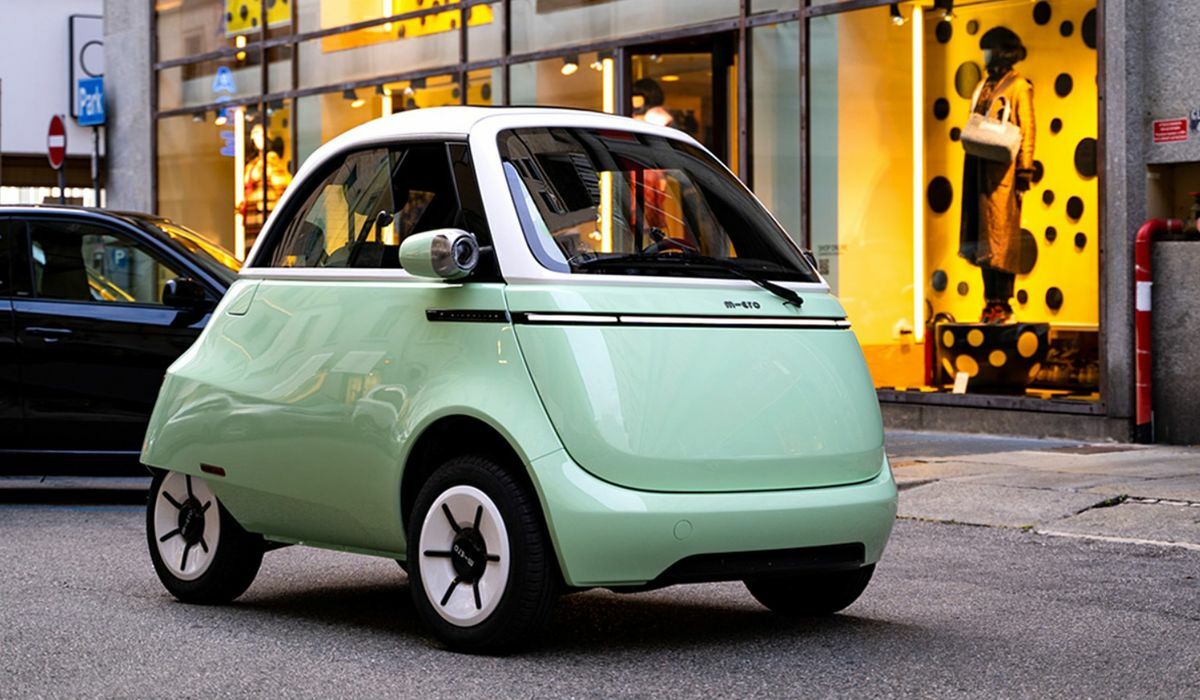EV Electric vehicles are transforming the automotive landscape by offering sustainable, efficient, and emission-free transportation options.
Renault 5 E-Tech
A compact electric car that has generated significant anticipation since its concept debut in 2021 is the new Renault 5. It embodies what I believe the Honda E should have been. Both cars have captured my attention with their impressive designs, eliciting excitement upon first glance. Luckily, they remained faithful to the original concept without significant alterations.
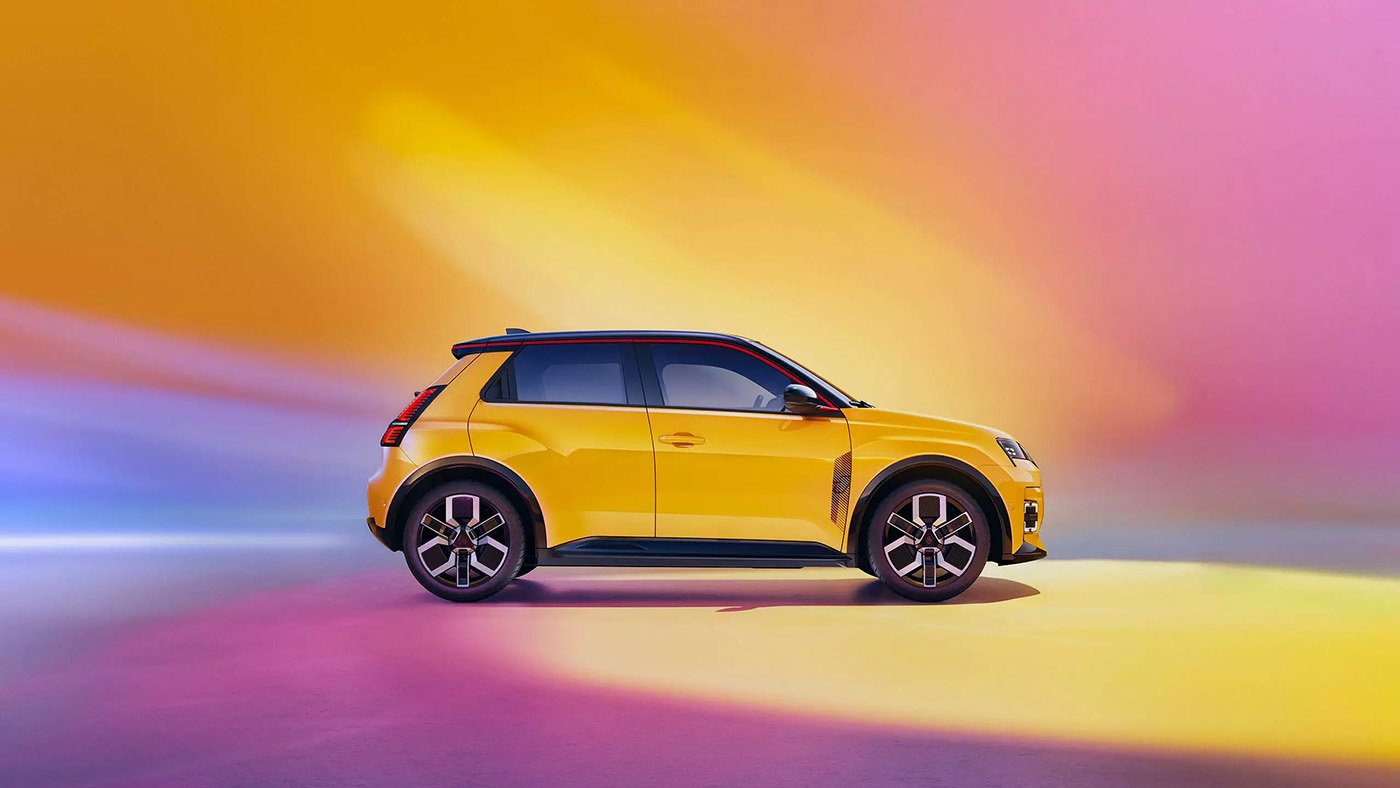
Yellow Pop
Creative!
The body shape not only mirrors that of its predecessors but also integrates several design features that refer to its past. For instance, the daytime running lights draw inspiration from the fog lights of the Renault 5 Turbo, while a charging indicator is situated on the hood, a nod to the location where cold air was once drawn in by a fuel engine in the classic car—a necessity rendered obsolete in modern times.
There are 5 colors to choose from:
- Yellow Pop
- Green Pop
- Starry Black
- Pearl White
- Night Blue
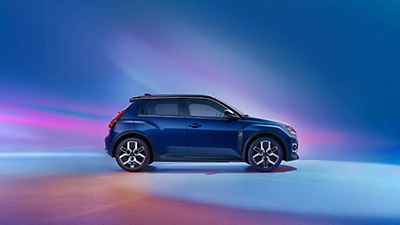
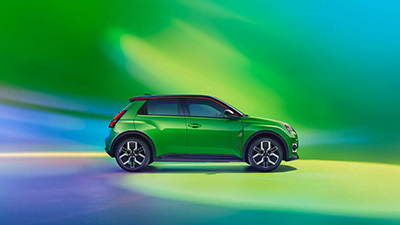
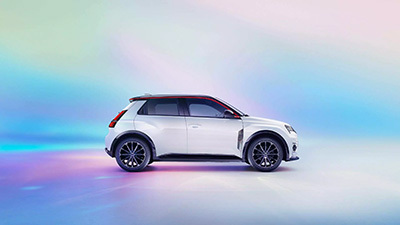
Aside from the above you also can choose from a range of options such as two-tone paint, roofline color variations, front roof, and side decorative strips, along with two wheel designs, to tailor the Renault 5 to your preferences. With 200 potential combinations available, you can create a customized look that reflects your individual taste.
Small is Beautiful
The Renault 5 may be compact on the outside, but it still accommodates up to five passengers. With the assistance of parking aids, manoeuvring and parking become effortless tasks. It's the perfect city car for everyday use. The length of the car is 3.92m and it has a boot capacity of 326L. Just what we need, an affordable alternative to the continuously growing large SUVs. Also equally important is its weight, just 1.450kg (3,196 lbs) making it as light as some comparable internal combustion engine cars. Reduced weight signifies a lower energy requirement to get moving, which is advantageous for overall consumption rates.
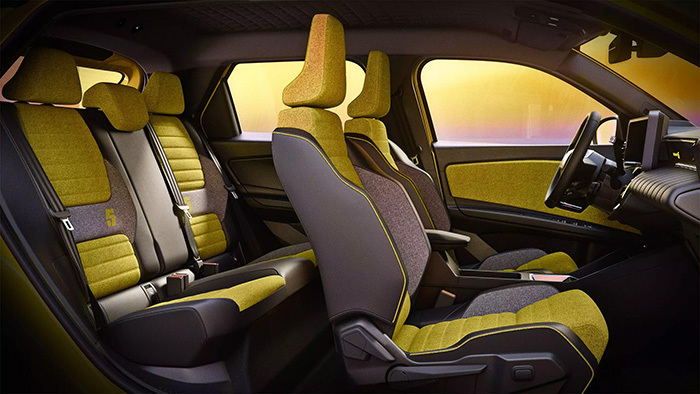
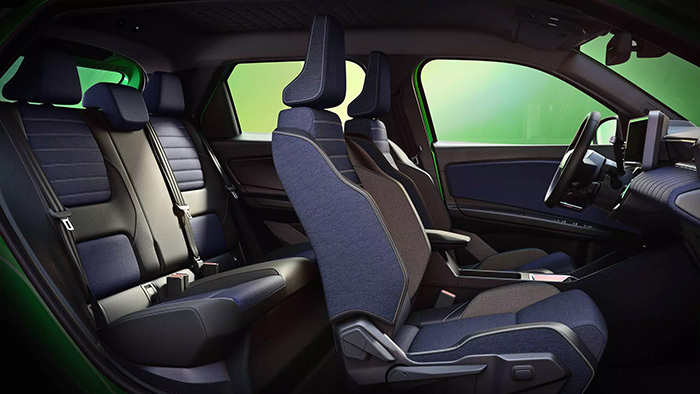
The seat design draws inspiration from the flame-spewing R5 Turbo, while the fabric used for covering them is crafted entirely from recycled materials. Additionally, certain trims feature dashboards and door panels constructed from recycled plastic. The roofline looks like felt and probably will do wonders for its acoustics. In my honest opinion, a quiet interior is a crucial aspect of an EV that I genuinely appreciate—it can make or break the overall experience.
Technical Details
Upon its autumn market debut, the model will initially be exclusively equipped with the larger 52 kWh battery (net) and the most robust engine, boasting 110 kW. All electric R5s will have an 11 kW AC onboard charger as standard. DC charging up to 100 kW is supported. The fast charging window spans approximately 30 minutes, enabling a charge level increase from 15% to 80% (SoC). Later there also be a variant with a 40 kWh battery, both batteries contain prismatic NMC (Nickel-Manganese-Cobalt) cells from Renault’s battery partner AESC. This all new Renault 5 sits on the so-called AmpR Small platform, intended for B-segment EVs and it will also be the foundation for the upcoming Renault 4.
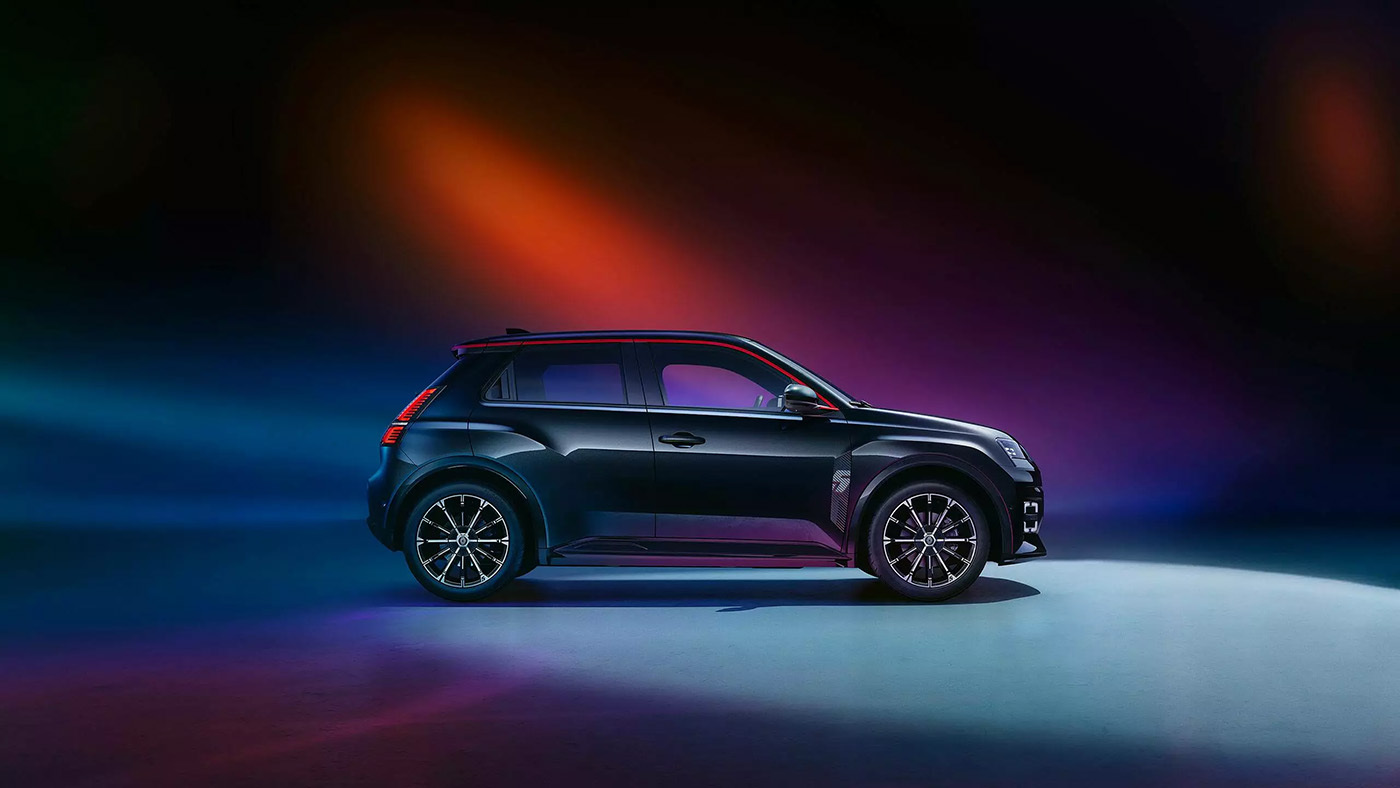
Starry Black
Inside you’ll also find two 10” screens, one that features the driving cluster and the other one takes on the role of a digital instrument cluster. The operating system is called openR link and has Google built-in: voice assistant, real-time navigation and more than 30 apps. They also launched an avatar called ‘Reno’ which supposedly interacts with the driver and passengers, both inside and outside the car. Because it integrates with the artificial intelligence chatbot ChatGPT, it can reply to questions using basically the whole internet as its source of information.
V2L and V2G
What excites me the most is that this price range (25.000 to 30.000 Euro) car will also come standard with a new AC bidirectional charger compatible with V2L (vehicle-to-load) and V2G (vehicle-to-grid) technologies. I'm pretty convinced that this pioneering system is set to become widely used. Most cars are sitting idle 90% of the time, making them quite useless. Now this technology will finally give the vehicle an actual purpose. Now it can become a real player in the energy ecosystem through the services of Mobilize, feeding electricity back into the grid when the price is right. As a result, users will enjoy significant savings on their electricity bills. The maximum power output is 3.7 kW.
Thanks to Mobilize V2G, cars become an energy reserve.
Unfortunately, there is a drawback: this feature won't be available in all of Europe at launch. Initially, Renault 5 owners will only have access to this feature in France and Germany this year, with availability in the United Kingdom scheduled for 2025. I have no idea about Belgium or the rest of Europe.
Made in Europe
The Renault 5 will be built in a factory in Douai (France), with the help of European suppliers less than 300 km away. This car isn't afraid to hide its origin, especially when you'll see the optional baguette holder (made by French basket-maker Marguerite Herlant).
Polestar 2
The conclusion of my Polestar 2 lease is approaching fast. Reflecting on the past three years of driving electric, I ponder the overall experience. What has ownership been like, and do I plan to retain it?
EV Driving
I've been immersed in the world of electric driving for even longer if we take my previous Volvo V60 T8 into account. However, that car introduced some *real* range anxiety, boasting only a 42 km all-electric range in optimal conditions. In a peculiar incident, the car even declined to operate in all-electric mode, displaying a warning on the dashboard: "Aged fuel. Start engine to consume fuel." I had to deplete the fuel reservoir before I could resume electric driving. Nevertheless, let's return to the discussion about the Polestar and the rationale behind choosing this car.
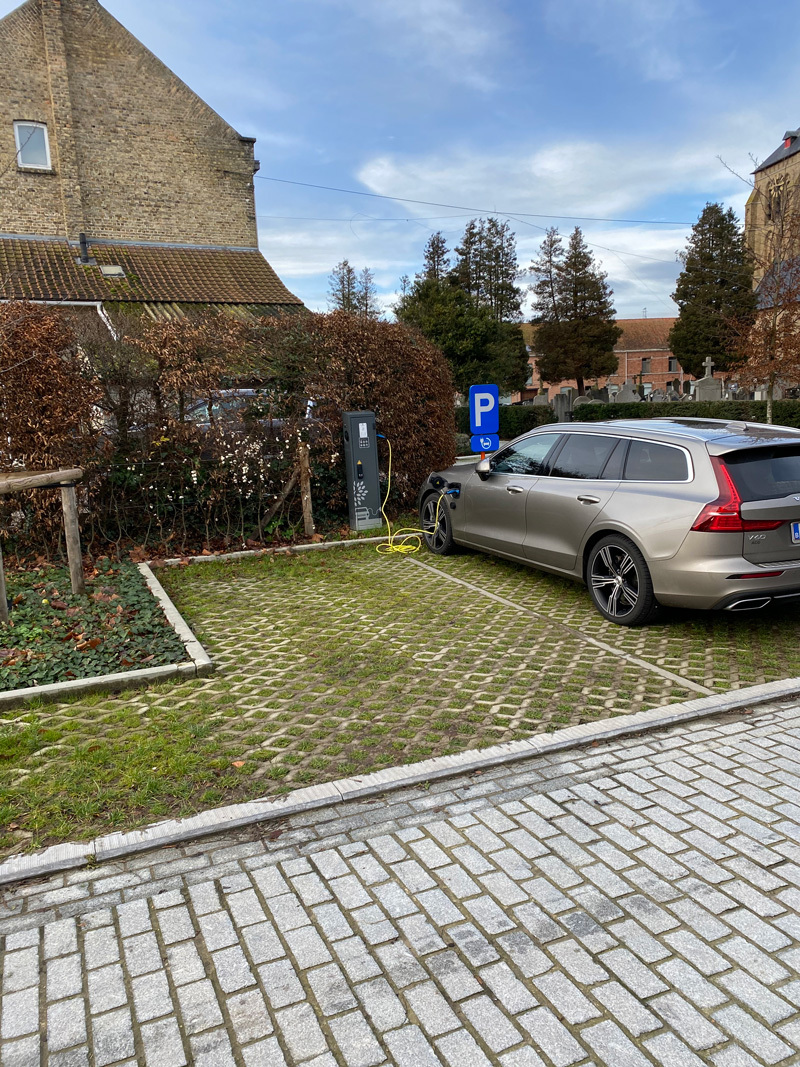
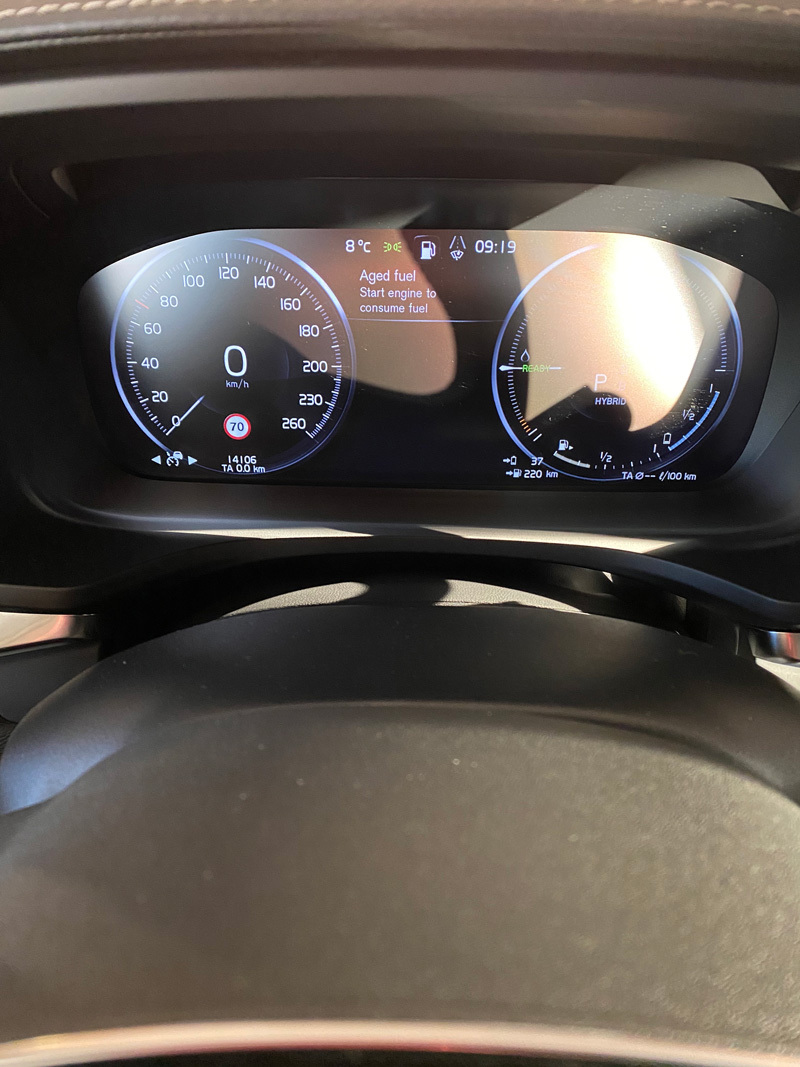
Why Polestar?
The primary factor influencing my decision was the company itself, particularly its leadership by a designer. What sealed the deal for me was the way it positions itself in the market, emphasizing transparent and open communication about its climate ambitions. The second compelling reason was its aesthetic appeal. The moment I saw the announcement, I was convinced that this would be our next car. All of this was decided well before I even had the chance to take it for a test drive.
How Was the Ownership Experience?
My initial experience behind the wheel was at a Polestar event in Kortrijk, and fortunately, it exceeded all expectations. This car is truly fantastic to drive, boasting excellent build quality. It's a Magnesium variant equipped with a dual motor, delivering 300 kW / 408 hp. The acceleration is impressively fast, taking just 4.7 seconds to reach 100 km/h. The Polestar 2 cabin is quiet, especially so on winter tires. Pilot Assist works great and is trustworthy. Geert even uses it on all roads. It's the type of car that you eagerly anticipate driving every time you step into it.
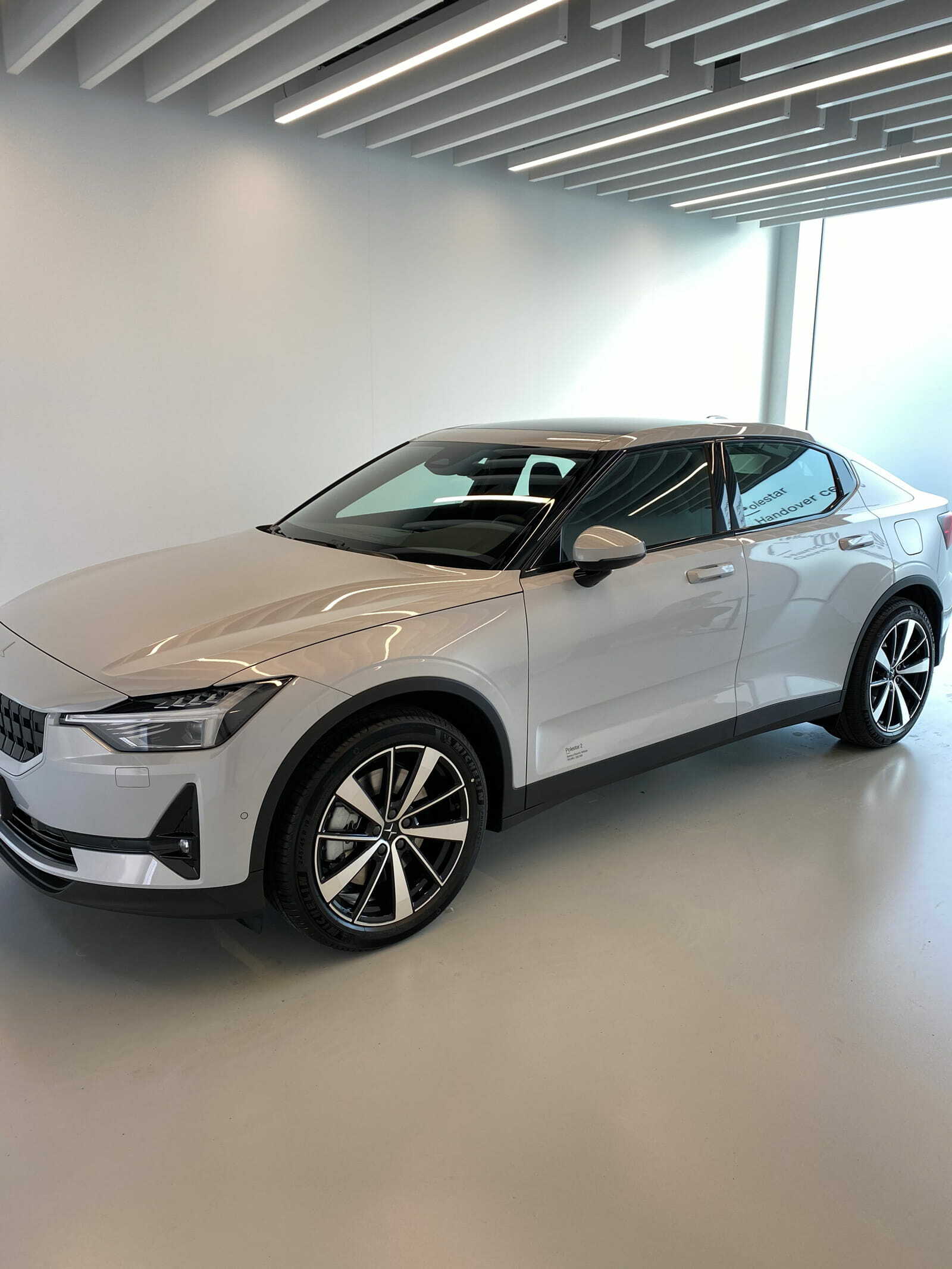
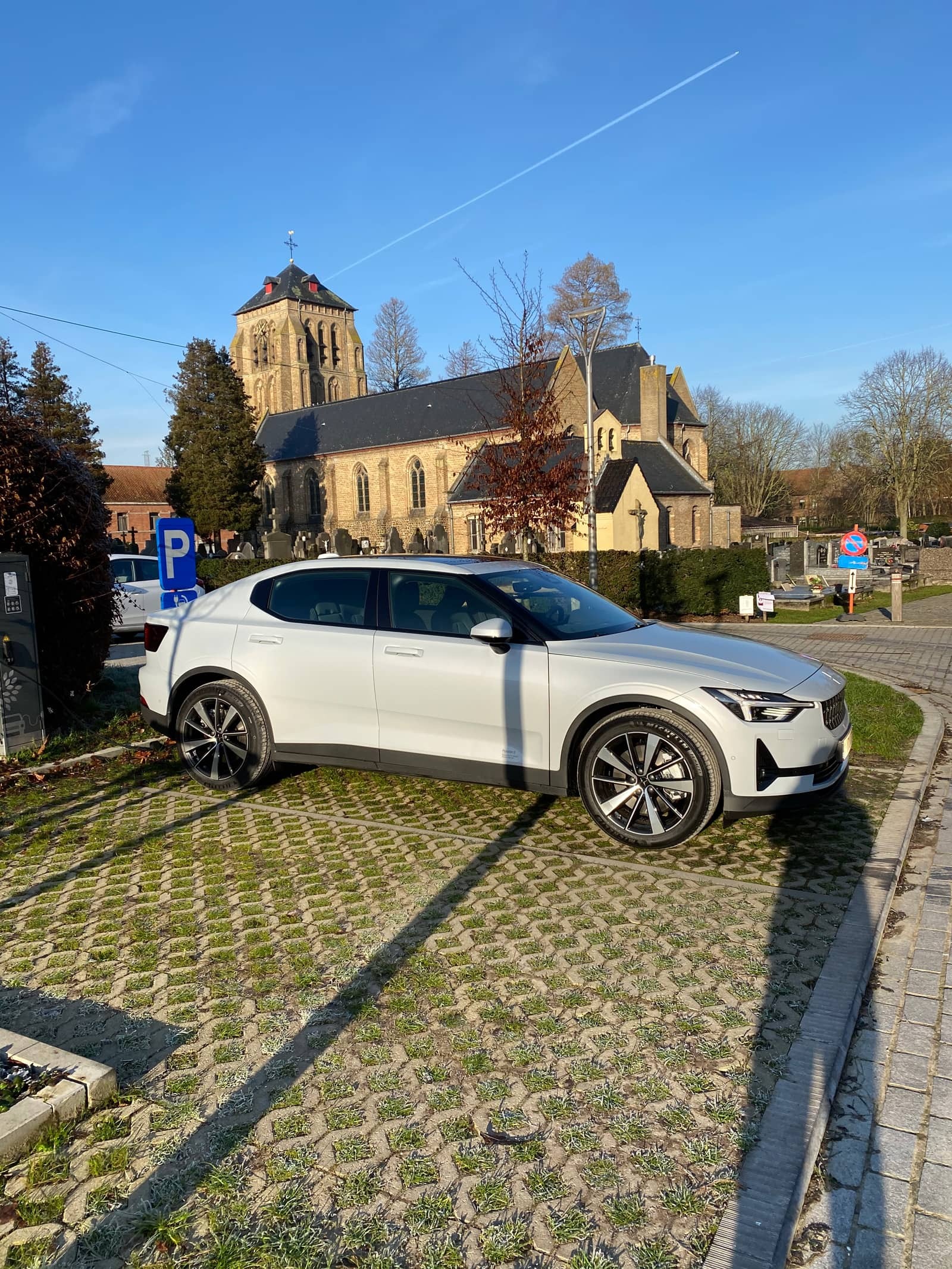
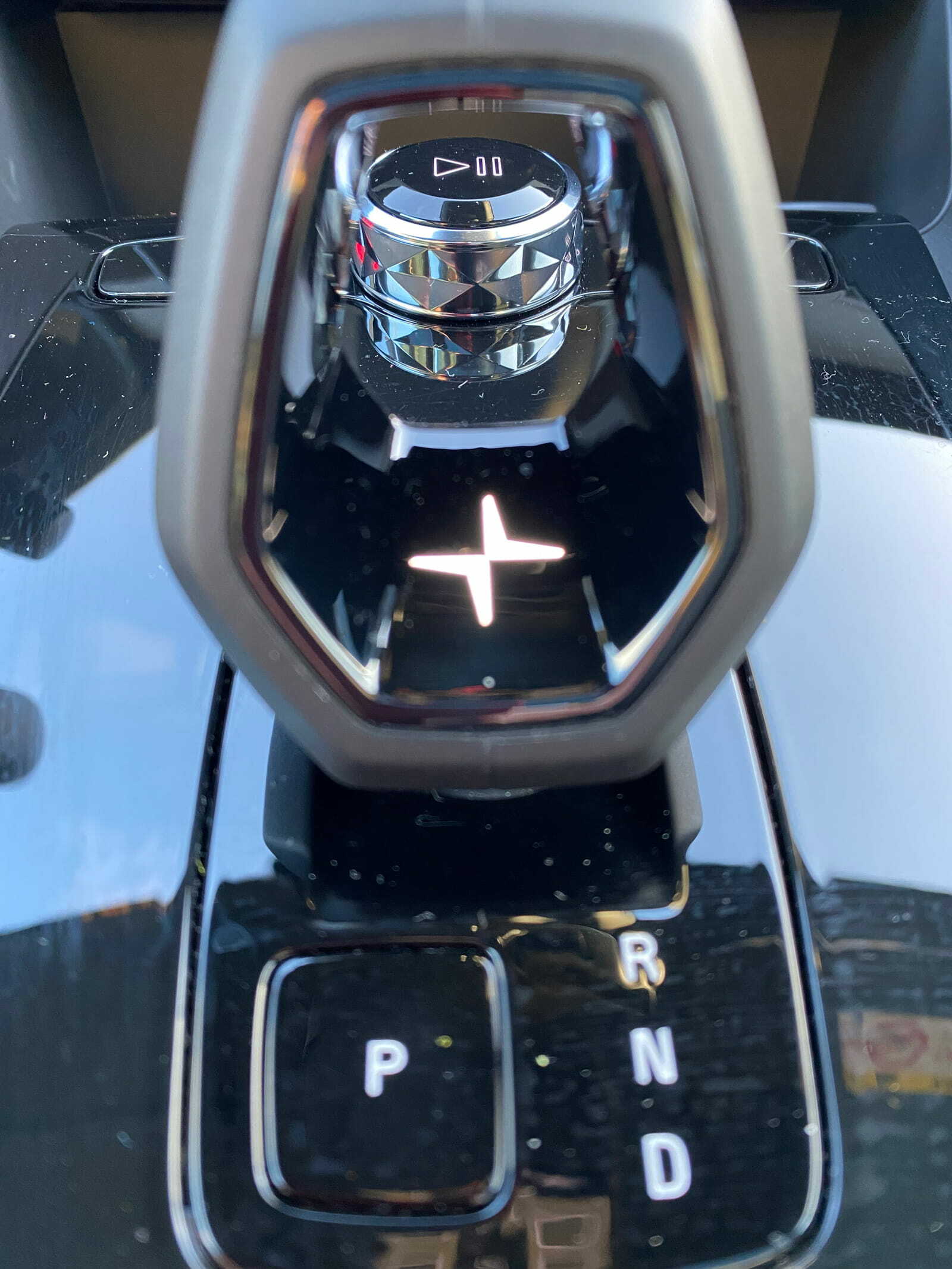
The ownership experience had its share of hiccups, particularly in the initial stages. The TCAM Module exhibited erratic behavior, leading to an unstable internet connection and, at times, a complete lack of data—quite problematic given the car's reliance on it. Fortunately, the module was replaced a couple of times, all covered under warranty. The resolution to these issues came when there was an improvement in network coverage, ultimately addressing the connectivity issues.
I encountered one significant problem when the car abruptly refused to function, leaving me stranded in the middle of an intersection. Subsequently, the car had to be towed to the garage, where it was determined that the issue lay with the printed circuit board. In each of these instances, I was provided with a replacement car. My trust in the brand remained steadfast, largely owing to the exceptional service and customer support from ACG Polestar Ghent. The service there is truly top-notch, with incredibly helpful staff. I never experienced frustration when reaching out or visiting, thanks to Isabel Vanhulle and her excellent team! They now also have Polestar spaces.
Overal the experience these past 3 years has been lovely with some room for improvement on the phone part. Just remember that I was an early adopter.
Software
Let's delve into the software, a crucial aspect of the ownership experience. The system operates on Android Automotive, and the current state of the car is vastly different from its 2020 counterpart. Over time, I've received numerous 'over the air updates' that have not only refined the car but also introduced new features. The most significant improvement has been the enhanced efficiency of the car, achieved through meticulous tuning of the motors. In the early stages of ownership, most of my rides consumed 25 kWh/100 km or more, considering the car's 19" tires. Nowadays, it's not uncommon for me to achieve 17 kWh/100 km, marking a notable improvement in overall efficiency throughout my ownership. Overal efficiency the last 5000km has been around 19 kWh/100 km.

Polestar homescreen on Android Automotive.
Another crucial aspect of owning an electric vehicle is the software that manages predictions about your range when inputting a destination into the navigation system. The mapping itself is powered by Google, ensuring a top-tier experience. The battery management is notably reliable, consistently providing slightly conservative estimates, usually a few percentage points below the actual capacity. I have complete trust in the system and am comfortable pushing the charge level to around 10% or even lower.
In cases where the remaining charge isn't sufficient to reach the destination, the car suggests suitable charging stops, providing information on available stalls and the required charging time. These are insights gained through experience. Those who express concerns about spending two hours charging likely haven't had much EV experience. Charging the car to 100% is uncommon because the process slows down significantly from 80% onwards. Personally, I typically charge to 60%, 70%, or 80%, depending on the destination.
With an EV, your approach to travel planning evolves. Stops align with natural breaks for activities like using the restroom, relaxing, eating, or grabbing a drink. Most of the time, you end up needing to hurry to prevent overcharging. It's surprising how quickly 30 minutes pass, and the gained range is often more than enough.
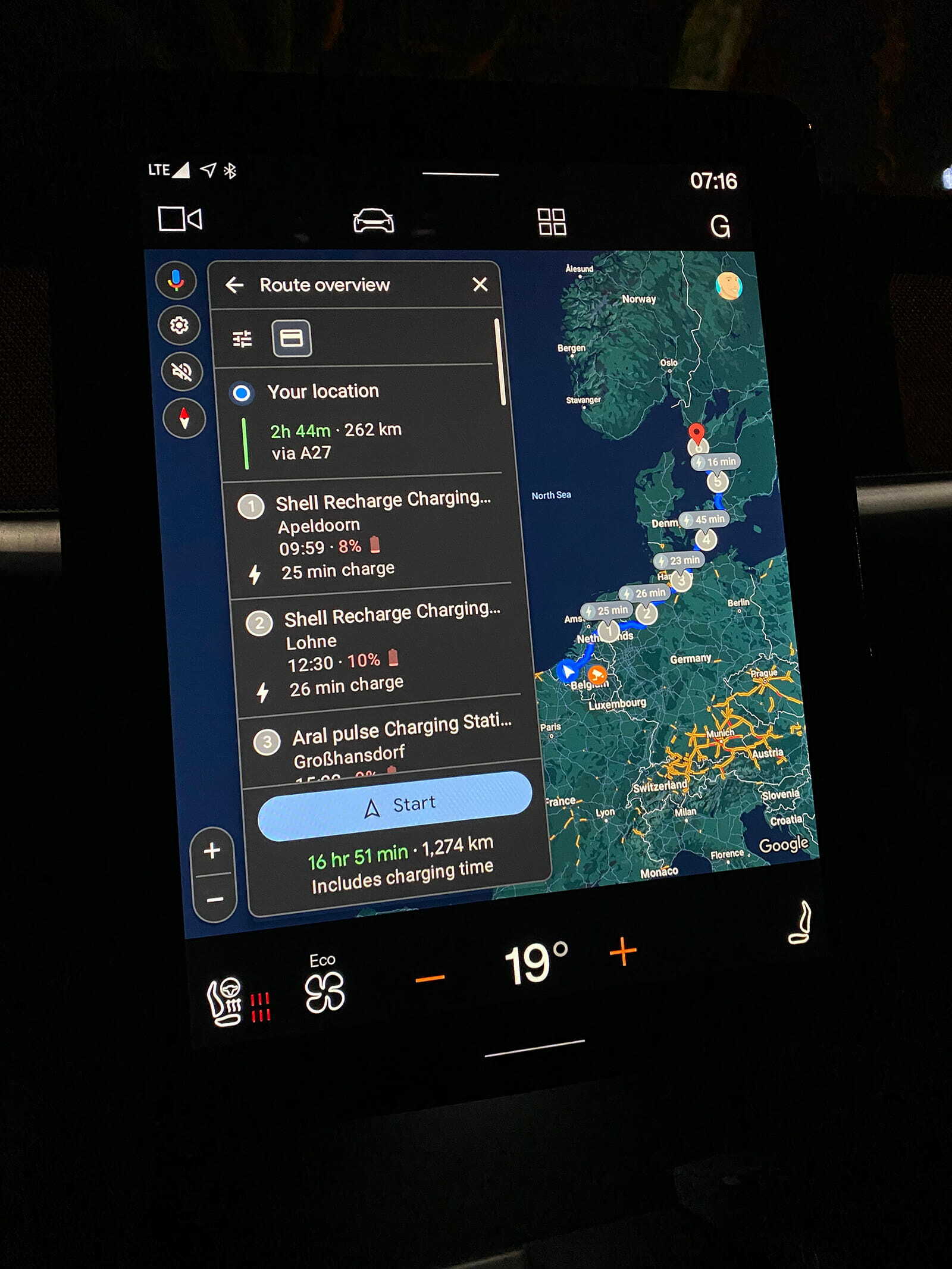
Charging destination to Polestar Sweden.
The Phone Application
One aspect that didn't quite meet expectations was the phone application. Its functionality was severely limited, often leading to frustrating experiences. For instance, when the car was charging in the village on a discounted tariff, attempting to check the remaining charging time resulted in the app failing to refresh correctly. It displayed inaccurate charge levels or timed out. No way to get a notification when charging was done. Another instance was with pre-conditioning the car, where clicking would lead to multiple timeouts before actually working. After nearly three years, they've finally launched version 4 of the app recently, a complete rebuild that now operates seamlessly and as anticipated. It's almost amusing when they announce the release of a phone that seems so unnecessary and doesn't align with their environmental goals when they need that long to get an app running as it should. We don’t need more, we need less!
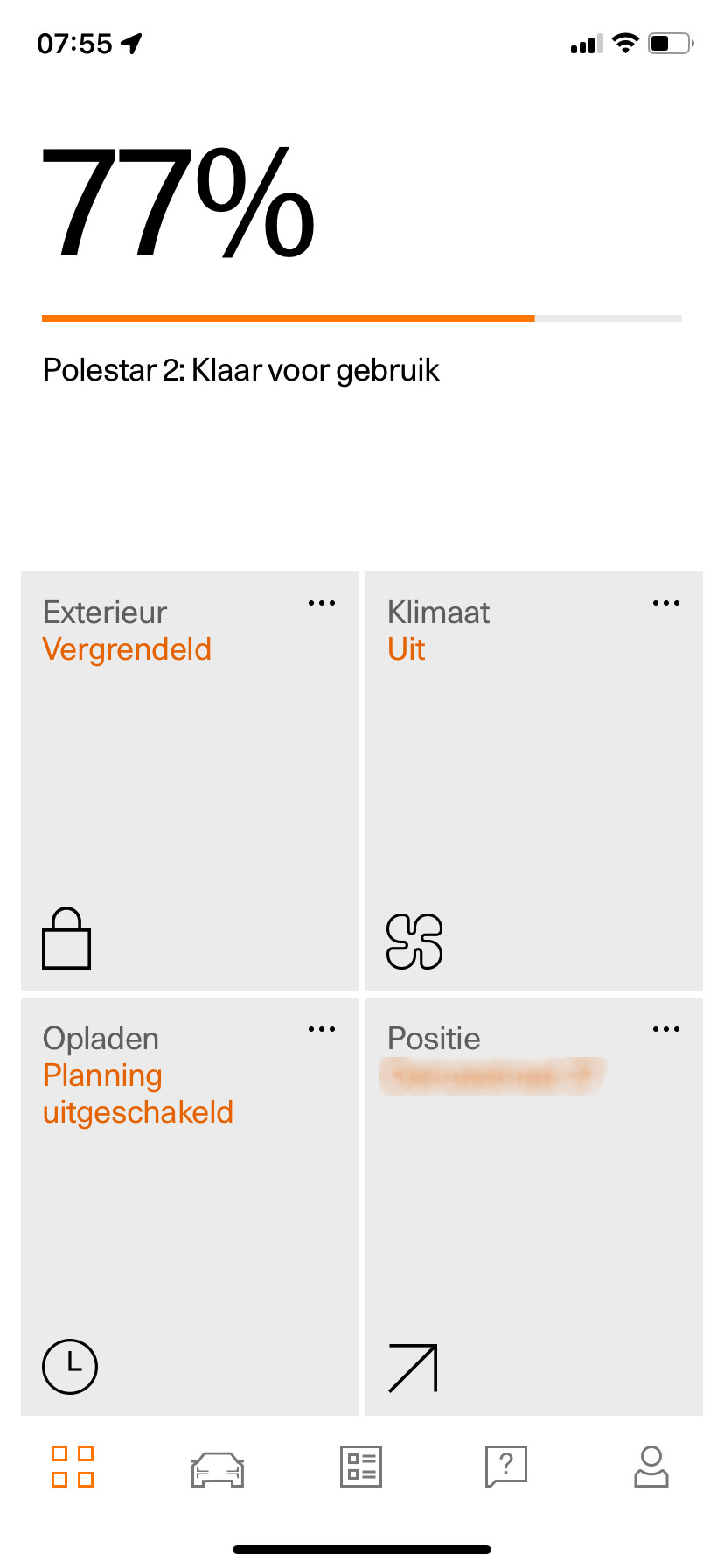
Version 4 homescreen of the iPhone application.
Will I Stay with Polestar?
I had hoped for the Polestar 4 to be a smaller car, but unfortunately, that's not the case. In my sincere opinion, Polestar's inclination towards larger cars seems somewhat at odds with their environmental aspirations. I understand that people love BIG SUV’s but sometimes you have to be brave and be a leader and steer people in a different direction with a well thought out offering. So no I not will extend my lease.
I'm returning to Volvo! My upcoming car will be an EX30—the smallest Volvo yet and at an affordable price. Similar to my approach with the Polestar 2, I placed the order without seeing it in person or test driving it. It should be in my hands by April. Will test drive it in January.
Motocompacto
This adorable electric scooter pays homage to the Honda Motocompo fuel-powered scooters from the 1980s. When fully folded, it resembles a suitcase, making it convenient to stow in your car's trunk or take it on public transit. Weighing in at 18.7kg/41.3lbs, it's light enough to lift comfortably, aligning perfectly with the demands of modern urban mobility.

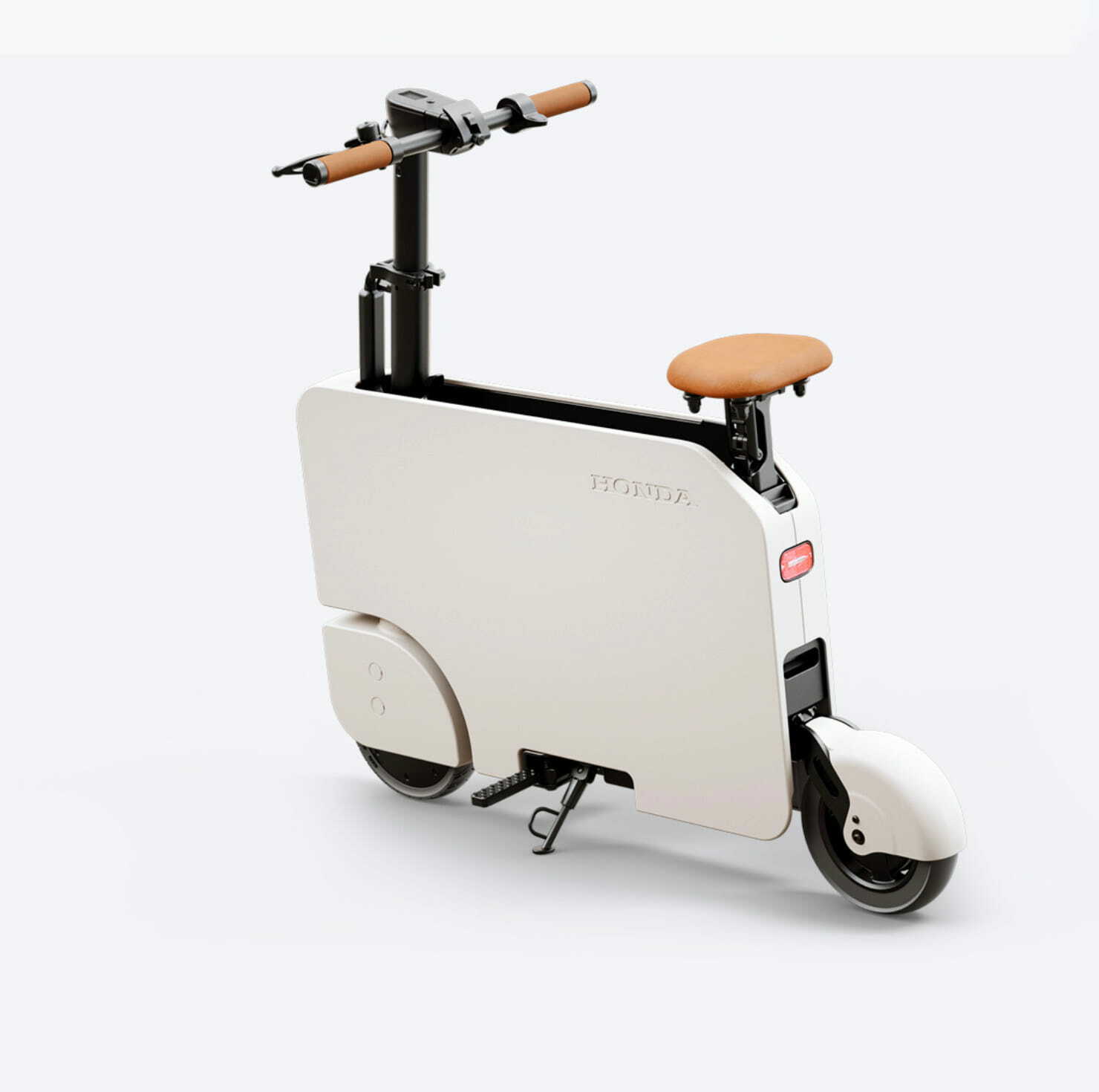
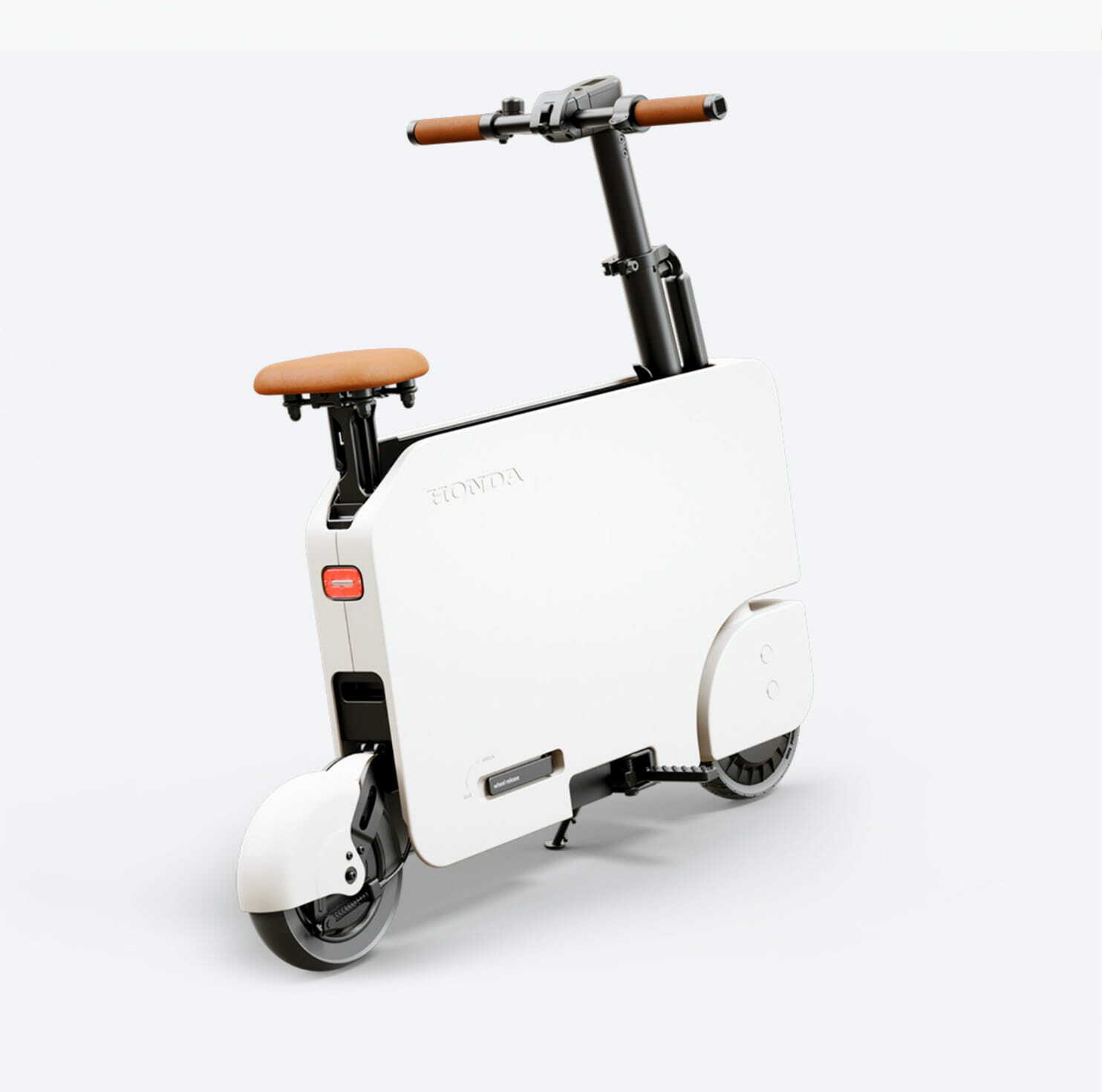
With a top speed of 24km/h/15mph, a maximum range of 19.3km/12 miles, and a peak output of 490 watts, it possesses ample power to serve as a first- and last-mile solution, designed to meet the evolving needs of urban mobility. Honda says it reaches it topspeed in 7 seconds. Its suitcase-like shape also provides an ideal canvas for stickers, decals, and custom logos, guaranteed to turn heads!
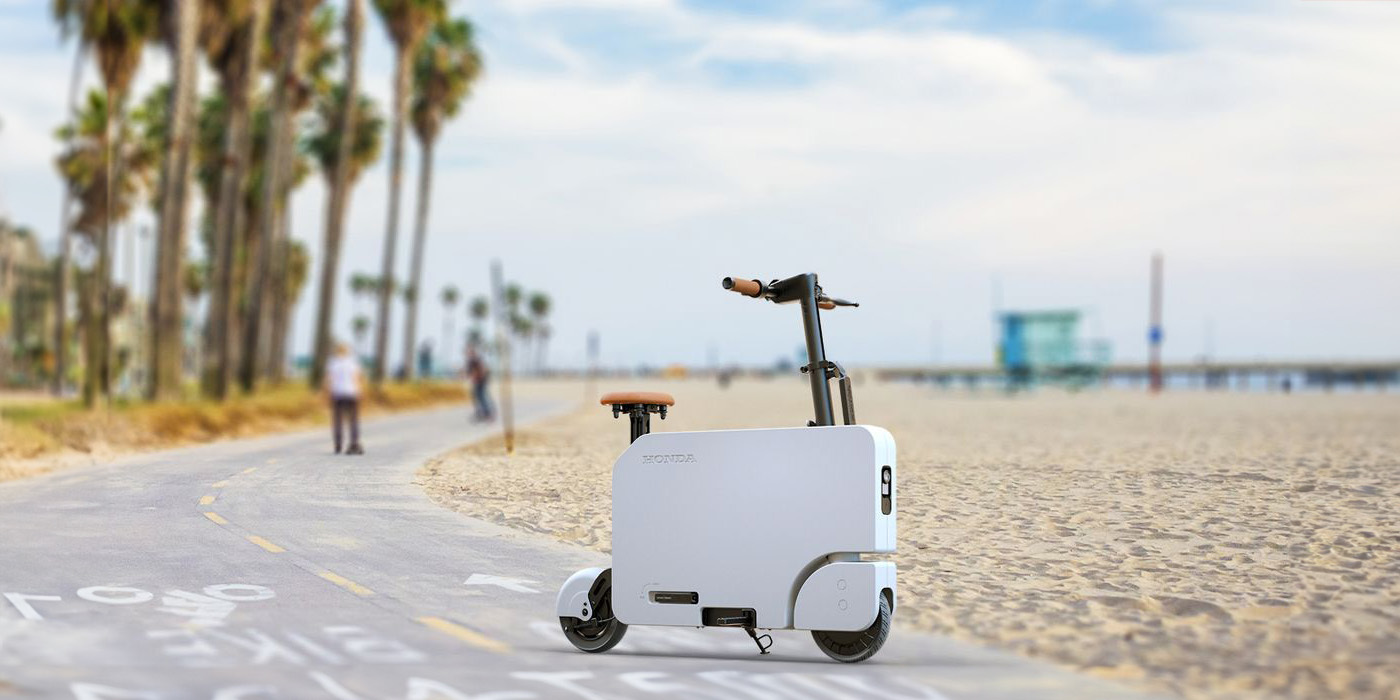
Fits Any You, Any Where.
No word if the Motocompacto will be launched in Europe. All I could find is that it will be available in the US for $995 in November via selected Honda dealers. Make sure to take a look at the animation demonstrating how everything folds together. It's truly delightful!
Volvo EX30
I don't prefer SUV's, but I do like smaller cars, especially EV's. While VW pledged the ID2 (4,05 meter), it will take several years for that car to arrive. However, the recently unveiled fully electric Volvo EX30 (4,25 meter) in Milan last week fits the bill.
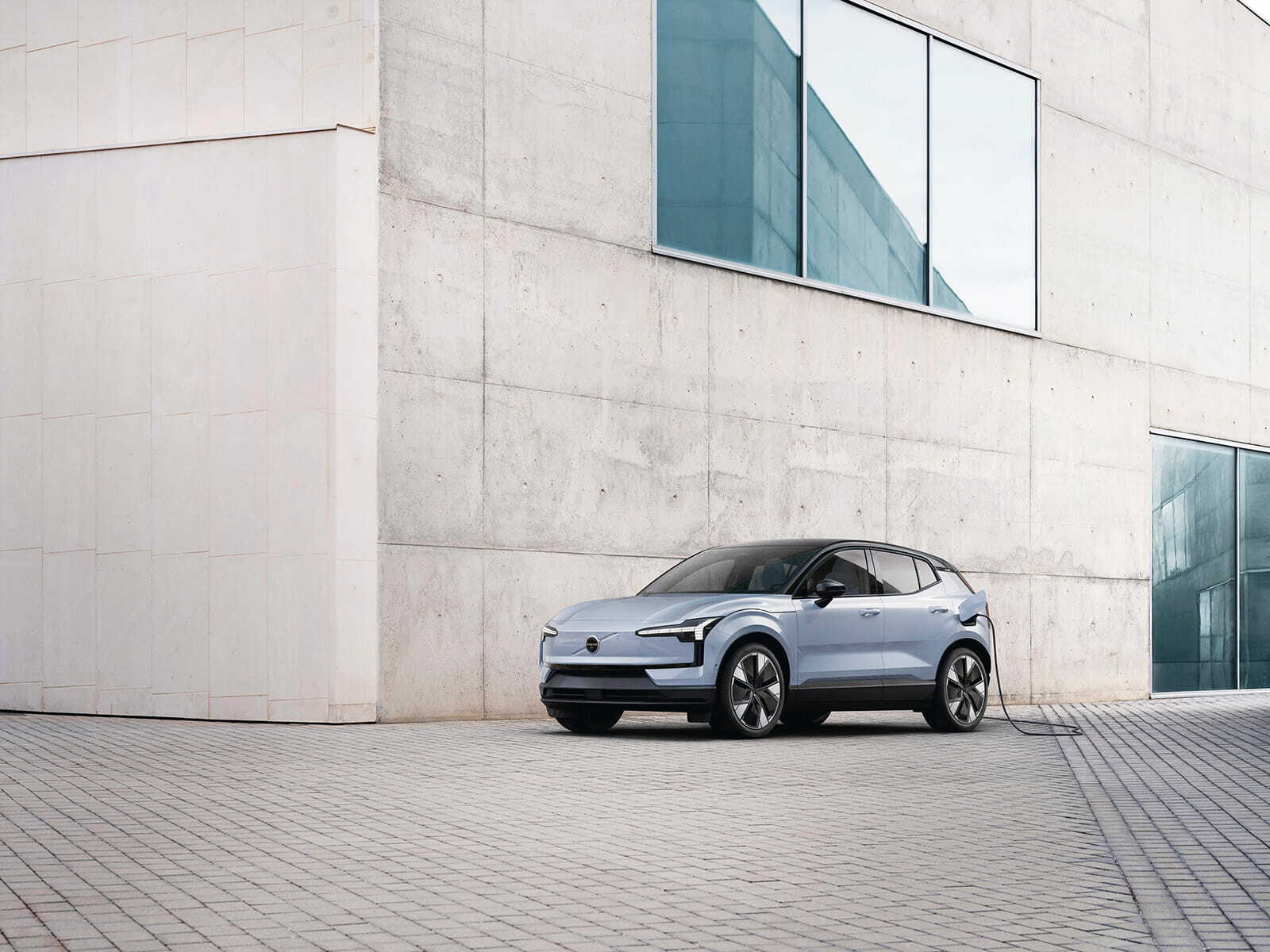
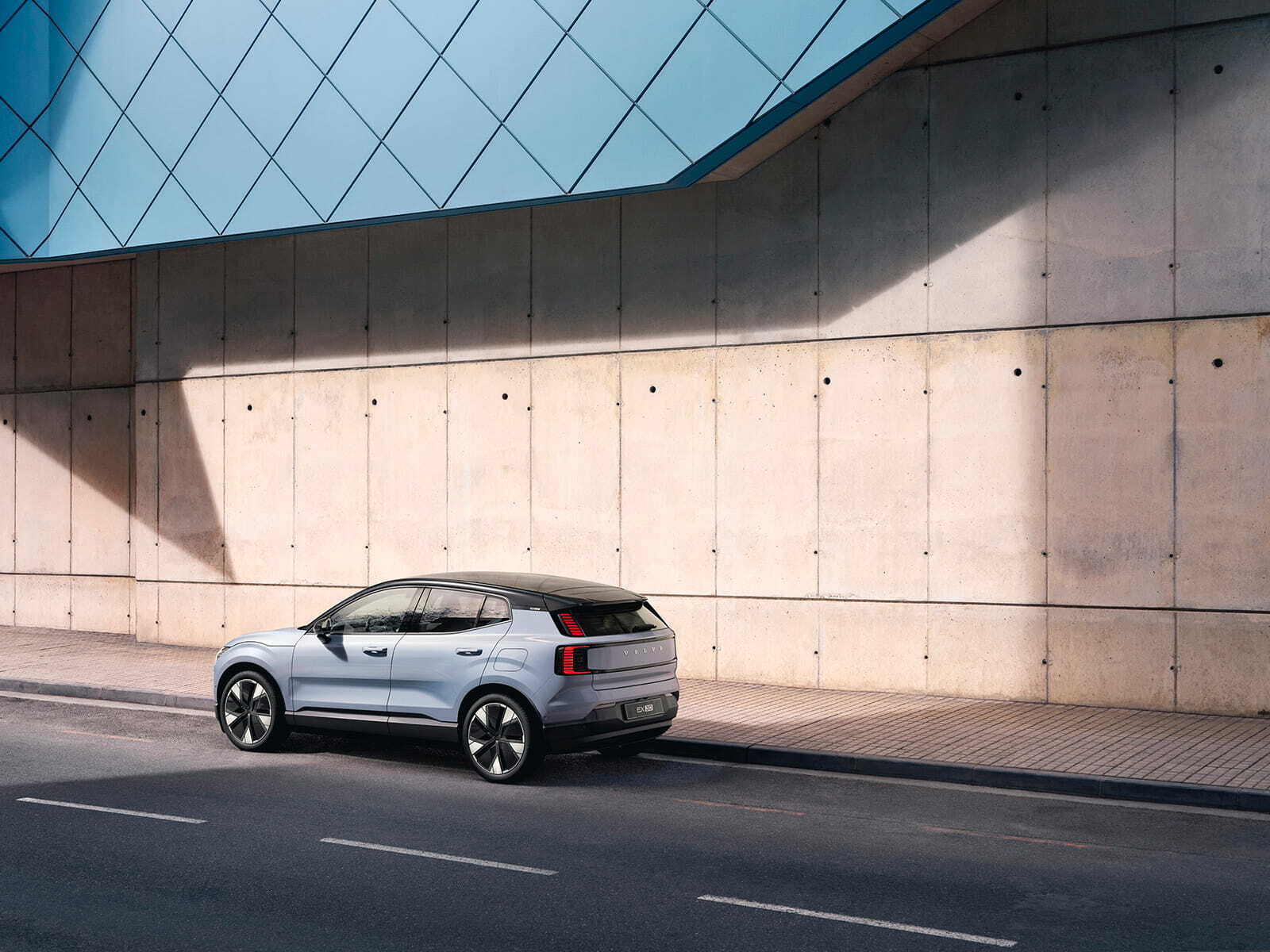
It boasts Volvo's expected safety features and holds the record for the smallest CO2 footprint among all Volvo cars so far. I can't deny my admiration for Scandinavian design. The EX30 captures Volvo's design essence in a compact package. A balanced and refined exterior is achieved through a lengthy wheelbase, ample wheels, and symmetrical overhangs. Its electric nature is evident in the self-assured front, enclosed grille, and digitally rendered trademark Thor's Hammer headlights.
With five lively exterior hues, like trendy Cloud Blue and vibrant Moss Yellow (inspired by coastal lichen growth in Sweden), it exudes character and individuality If you missed the Milan unboxing, watch it below.
There's no one-size-fits-all battery for powertrains. With the EX30, they offer three powertrain options and two battery types, giving you the freedom to choose what suits your needs. This approach allows them to provide an attractive entry price (around EUR 36.000) for the EX30. Regrettably, the starting price in Belgium is EUR 38,900. That model has a single-motor option with an LFP battery.
We know that price and cost of ownership is still one of the biggest challenges when people consider switching to an electric car.
I love that the EX30 offers five ambient lighting themes, each inspired by a unique Scandinavian landscape. These themes subtly shift in color, creating a serene atmosphere inside the car.
You can choose from the warm sunlight filtering through forest leaves, a sunset on the Swedish west coast, the mesmerizing northern lights, the golden summer skies of Swedish midsummer, or the vibrant ambiance of an urban sunset. To enhance the experience, you can even pair each lighting theme with a matching ambient soundscape.
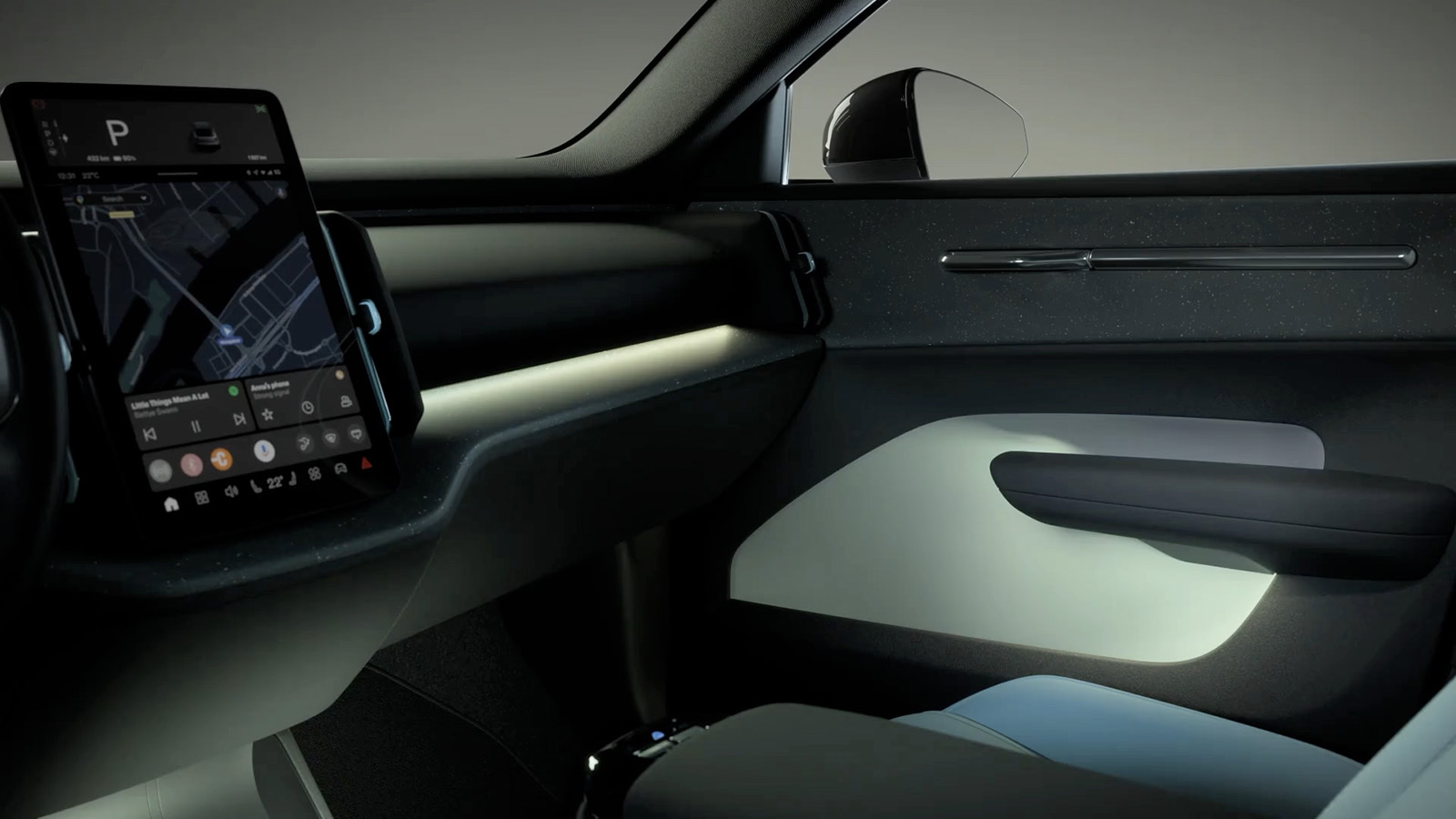
The EX30 is a viable choice for me when my Polestar 2 lease is ending. I aim to downsize anyway and maybe take it even a step further by opting for car-sharing, such as BattMobility. After all, a car remains stationary 90% of the time. While an ideal scenario would be to pick one up when I need one, unfortunately, options like these are currently unavailable in my area. Early adopters are always like that 😊
Polestar 4 Surrounded by 90,000 Tulips
As you might know, I am a Polestar customer myself and I always liked the way they approach their advertising. For example they brought 90,000 tulips to the launch of Polestar 4 at Auto Shanghai. Bringing creative ideas to life sometimes requires moving heaven and earth. The team of Polestar took up the challenge to transform the technical room for the launch of an e-car into a sea of flowers in just a few weeks. The results exceeded their expectations, but putting on the show was no walk in the park. As an environmental responsible company they recycled the tulips afterwards.
The first thing I noticed was the scent. That's something you cannot plan or experience when looking at computer renderings
Get in on the behind-the-scenes action with the video below. If you want even more detail there is a write-up on their site that contains a deeper insight into this remarkable event booth design. Go read it because it contains some interesting nuggets.
The Microlino
One of the cutest and best looking and super cute electric city car is The Microlino. You can safely call this the rebirth of the BMW Isetta. Designed in Switzerland by Wim, Oliver and Merlin Ouboter.
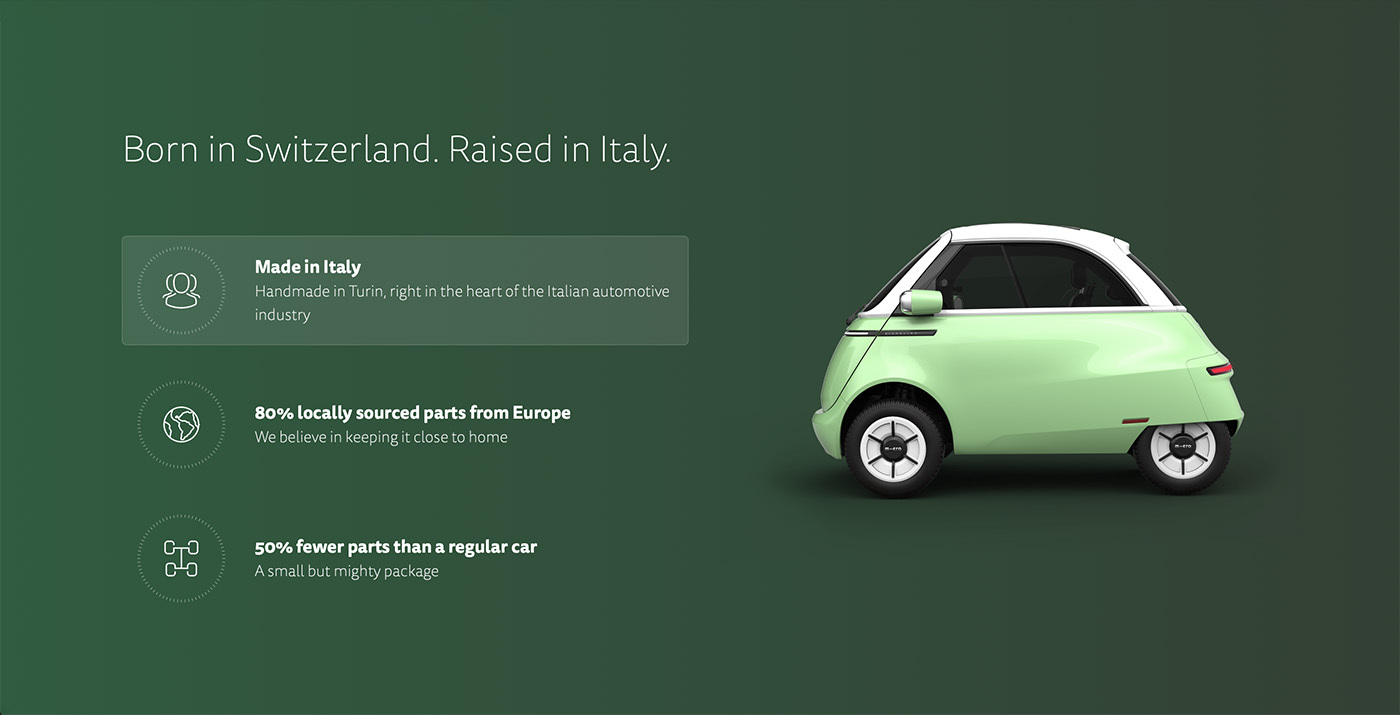
The ideal mix between motorbike and car.
The Microlino weighs only 500 kg, less bulky than a car (barely 2.5 meters long!) but a lot more comfortable than a two-wheeler. The two-seater will feature a 25-hp motor drawing power from a choice of three batteries, offering 6-, 10.5-, and 14-kWh capacities, which are expected to be good for 95 km, 175 km and 230 km of range, respectively. Charging it would take 3 to 4 hours via a normal socket (depending on the type of battery). The tiny headlights are attached to the wings like feelers and shine with LED technology - giving the Microlino a unique light signature at night. All in all a wonderful piece of design. Base price in Belgium is 17.990 Euro.
